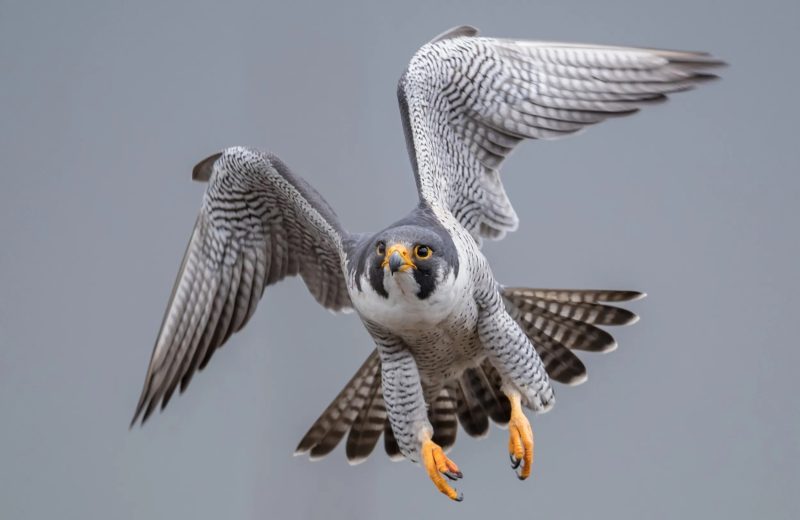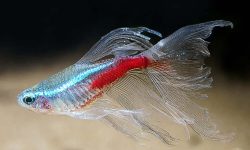Falcons are among the most skilled predators in the animal kingdom, known not only for their unmatched speed but also for their extraordinary eyesight. While a peregrine falcon’s high-speed dive grabs headlines, it’s their razor-sharp vision that makes such hunts successful. But how exactly do falcons spot tiny prey from such great distances? In this article, we’ll explore the anatomy, function, and power of falcon vision—and what humans can learn from it.

A Raptor’s Greatest Weapon: The Power of Vision
Why Vision Matters Most for Falcons
While many predators in the animal kingdom rely on a combination of senses to locate and capture prey, falcons take a very different approach. These raptors depend almost entirely on their eyesight to survive. For them, vision isn’t just helpful—it’s absolutely essential.
Unlike wolves that use their sense of smell to track animals, or owls that detect prey using exceptional hearing in the dark, falcons are daytime hunters that rely on spotting movement from great heights. They rarely use sound or scent when hunting. Everything begins with what they see.
When a falcon takes to the sky, it isn’t just flying randomly in hopes of finding food. It actively scans the landscape below, searching for the slightest sign of movement. A flutter of wings, a running rodent, or even the shimmer of feathers from a distant bird is enough to trigger pursuit.
Falcons often soar hundreds of meters above the ground. From that altitude, locating prey the size of a pigeon or a mouse would be nearly impossible for most animals. But falcons have the optical tools to make it not only possible—but accurate.
Even in full flight, when wind resistance and body motion could easily blur vision, falcons maintain a sharp, stable gaze. This ability allows them to identify and lock onto prey even while moving at tremendous speed.
For falcons, sight is not just a sense. It’s their primary hunting weapon, their early warning system, and their guide through the skies. Without such exceptional vision, their entire lifestyle—especially their famous high-speed stoops—would be impossible.
How Far Can Falcons Really See?
Falcons are known for their astonishing ability to spot prey from extreme distances. But just how far can these birds actually see?
Studies and field observations suggest that falcons can detect small animals such as pigeons, rodents, or other birds from a distance of 1.5 to 3 kilometers (approximately 1 to 2 miles). That means a falcon flying high above an open field can locate a moving target on the ground that is smaller than a human hand.
This incredible range is largely thanks to their highly specialized visual system, which outperforms that of humans in several key ways.
To put it in perspective, human vision is typically rated at 20/20—meaning we can clearly see something at 20 feet that should be visible at that distance. Falcons, however, are estimated to have 20/5 to even 20/2 vision.
That means what a human sees clearly at 5 feet, a falcon can see just as clearly from 20 feet away. It’s a level of precision and sharpness that would feel superhuman to us.
This exceptional eyesight isn’t just about distance—it’s also about detail. Falcons don’t just see far; they see fine textures, subtle movements, and tiny contrasts that would be invisible to most animals—even humans using binoculars.
Their long-distance vision gives them a powerful advantage in the wild. By spotting prey long before being detected themselves, falcons can plan their approach, calculate dive angles, and attack with surprise and precision.
In short, falcons are nature’s long-range snipers—able to locate, track, and strike from distances that defy human perception.
Anatomy of a Falcon’s Eye: Engineered for Precision
Larger Eyes Relative to Head Size
One of the most striking features of a falcon is the sheer size of its eyes. Proportionally, a falcon’s eyes are enormous compared to the size of its skull. In fact, their eyes can account for up to 50% of the volume of the head, which is significantly larger than in most birds—or even humans.
This oversized eye structure isn’t just for show. Bigger eyes mean larger retinas, more light intake, and a wider field of view, all of which enhance visual clarity and performance. It gives falcons the biological equipment needed for long-range and ultra-detailed vision.
Interestingly, falcon eyes are fixed in place within their skull. Unlike humans, they can’t move their eyes around to glance in different directions. To change their line of sight, they must rotate their entire head.
While this might sound like a limitation, it actually has an important benefit: stability. Because their eyes don’t shift in the sockets, falcons enjoy a more stable visual frame while flying at high speeds or tracking moving prey from the air.
This setup allows falcons to maintain a locked focus on their target, even when their bodies are in motion—especially during the high-speed dives known as stoops. The combination of large, fixed eyes and a mobile neck creates an optical system finely tuned for high-performance hunting.
Ultimately, their eye-to-head ratio is not just an odd anatomical fact. It’s a critical adaptation that supports their success as aerial predators.
High Density of Photoreceptor Cells
At the heart of a falcon’s incredible vision is the structure of its retina—the thin layer of tissue at the back of the eye that receives light and processes images.
The retina contains photoreceptor cells, specifically cones, which are responsible for detecting color and fine detail. Falcons have an astonishingly high concentration of these cones: up to 1 million per square millimeter.
To put that in perspective, the human retina contains about 200,000 cones per square millimeter. This means falcons have nearly five times more visual detail than we do in the same space.
This dense packing of cones allows falcons to see extremely fine textures and tiny movements, even from great distances. While a human might only see a vague blur of motion on the ground, a falcon can distinguish the fluttering of wings or the outline of a small animal with remarkable clarity.
This sharpness isn’t just about focus—it directly affects their ability to hunt. By resolving such fine details from far away, falcons can identify prey, assess its movements, and plan their strike long before they’re even noticed.
In essence, their cone-dense retina acts like a super-powered zoom lens, giving them a level of visual precision that few other animals can match.
This trait, combined with other unique features of their eyes, makes the falcon one of the most visually gifted hunters in the natural world.
Two Foveae for Enhanced Focus
In humans, the fovea is the small central pit in the retina that provides our sharpest vision. It allows us to read, recognize faces, and see fine details—always directly in front of us. Most animals, including humans, have just one fovea per eye.
Falcons, however, are built differently. They have two foveae in each eye, a feature that dramatically enhances their visual capabilities. This rare adaptation gives them a kind of dual-focus system that supports both precision targeting and wide-range scanning at the same time.
The first fovea is aligned for forward vision. This central fovea allows falcons to zero in on prey directly ahead, giving them pin-sharp focus on a single point—essential during the final moments of a high-speed dive.
The second fovea is angled toward the side, enabling falcons to monitor broader areas of their environment without moving their heads. This peripheral fovea acts almost like a built-in radar, constantly scanning the surroundings for movement or potential threats.
Together, these two foveae allow falcons to do something extraordinary: lock onto a specific target while still tracking other objects in their field of vision. It’s a level of spatial awareness and precision that even advanced human technology struggles to replicate.
This dual-fovea system is especially useful during flight. As falcons soar or circle, they can track potential prey across a wide landscape—then seamlessly switch to intense focus as they dive in for the kill.
It’s not just sharp vision—it’s strategic vision, perfectly designed for survival in the skies.
UV Vision and Natural Light Filters
One of the most fascinating aspects of falcon vision is their ability to see near-ultraviolet (UV) light—a spectrum of light that is completely invisible to the human eye.
While humans are limited to the visible light spectrum (roughly 400–700 nanometers), falcons can detect wavelengths below this range. This expanded spectrum gives them access to visual information that we cannot perceive.
Why does this matter for hunting? Because many small mammals, such as voles and mice, leave behind urine trails and droppings that reflect UV light. These markings might be invisible in normal daylight, but to a falcon scanning from above, they shine like bright signals on the landscape.
By following these UV-reflecting trails, falcons can track prey even when the animal is hidden, giving them a serious advantage in both open fields and dense terrain.
In addition to UV vision, falcons also possess built-in protection against harsh sunlight. Their eyes contain colored oil droplets within their photoreceptor cells. These oils act as natural filters, absorbing excessive blue and ultraviolet light.
This filtering system reduces glare, sharpens contrast, and improves color differentiation—especially useful when flying in bright daylight or toward the sun.
It’s the avian equivalent of wearing high-performance polarized sunglasses, but built directly into their biology. The result is a clear, stable, and color-enhanced view of the world, optimized for both spotting movement and navigating through intense light conditions.
Together, UV sensitivity and natural light filtering create a powerful visual toolkit that makes falcons effective hunters—not just during calm conditions, but in the most challenging light environments nature can offer.
How Falcons Use Vision to Hunt in Real Time
Tracking Targets During High-Speed Dives
One of the most breathtaking feats in the animal kingdom is the falcon’s hunting stoop—a high-speed dive that can exceed 240 miles per hour (386 km/h). This dramatic plummet from the sky is not just a show of speed, but also a test of precision vision under extreme conditions.
As the falcon begins its dive, everything changes in an instant. Air pressure increases, wind resistance intensifies, and the background becomes a blur of motion. Yet in the middle of this chaos, the falcon must do one thing perfectly: keep its eyes locked on its prey.
To achieve this, falcons rely on a combination of specialized eye muscles and flexible lenses. These adaptations allow them to rapidly adjust their focus as distances close at incredible speeds—something human eyes simply cannot do at such a rate.
Their eyes remain stable and clear, despite the force of wind hitting them head-on. Tiny muscles around the eye control minute lens movements, helping maintain a sharp image even when traveling at full speed.
Another key factor is the nictitating membrane—a translucent third eyelid that sweeps across the eye during the dive. This thin film protects the eye from debris and wind while preserving visibility, acting like a natural goggles system.
Falcons also use their binocular vision—the overlapping field of view from both eyes—to judge depth and distance with pinpoint accuracy. This allows them to time their strike down to the millisecond.
The result is a perfectly choreographed kill. From a mile above, the falcon spots its prey, locks on, and never loses sight—even as it barrels toward the earth at speeds faster than a Formula 1 car.
Their eyes don’t just survive the dive—they control it.
Stereoscopic Depth Perception
Falcons have forward-facing eyes that provide a wide field of binocular vision—the foundation of stereoscopic depth perception. This allows them to combine images from both eyes into a single, highly accurate three-dimensional view.
With this ability, falcons can judge distance and speed with remarkable precision. It’s what enables them to track fast-moving prey and calculate the exact moment to strike mid-air—even when both predator and prey are in motion.
As they dive, their brain constantly processes depth cues, adjusting their flight path in real time. Just before impact, the falcon makes subtle movements to position its talons perfectly.
Without this razor-sharp depth perception, high-speed aerial hunting would be nearly impossible. But with it, falcons become flawless interceptors, mastering the art of timing and space in the sky.
What Humans Can Learn from Falcon Vision
Falcon-Inspired Technology
Falcon vision isn’t just impressive—it’s influential. Scientists and engineers have long studied these birds to improve modern technology.
Their ability to maintain stable focus during high-speed flight has inspired motion-tracking systems in robotics and aerospace navigation. Drones, for example, now use vision-stabilization algorithms modeled after how falcons lock onto targets while diving.
Falcons’ sharp, long-distance vision has also influenced the design of high-resolution camera lenses and advanced optics used in surveillance and aviation safety tools.
Even artificial intelligence systems for object recognition and tracking are being trained using principles drawn from falcon hunting behavior.
By mimicking the falcon’s visual precision and tracking efficiency, engineers are bringing bird-inspired innovation into everything from autonomous vehicles to military drones.
Insights into Eye Health and Neuroscience
Falcon eyes aren’t just a marvel of nature—they’re a model for medical science.
Researchers studying the structure and function of falcon retinas have gained valuable insights into human eye health, particularly in fields like ophthalmology and neuroscience. The way falcons process visual information helps scientists better understand how the brain interprets images, and what happens when that process breaks down.
These studies are contributing to advances in treating visual disorders, including retinal diseases and conditions affecting depth perception or motion tracking.
Falcon vision is also helping to shape the future of artificial vision systems, from smarter eye implants to improved visual prosthetics—bringing us closer to restoring or enhancing human sight using nature’s own blueprint.
Conclusion
Falcon vision represents one of the most impressive adaptations in the animal kingdom. Their ability to spot, track, and strike prey from miles away is not just a product of speed or instinct—it’s a triumph of evolutionary biology. Every feature of their eyes is fine-tuned for survival, allowing them to dominate the skies with precision and grace.
So the next time you see a falcon soaring high above, remember: you’re witnessing one of nature’s most finely tuned visual systems in action. What could you achieve if you had eyes like a falcon—even for a single day?






